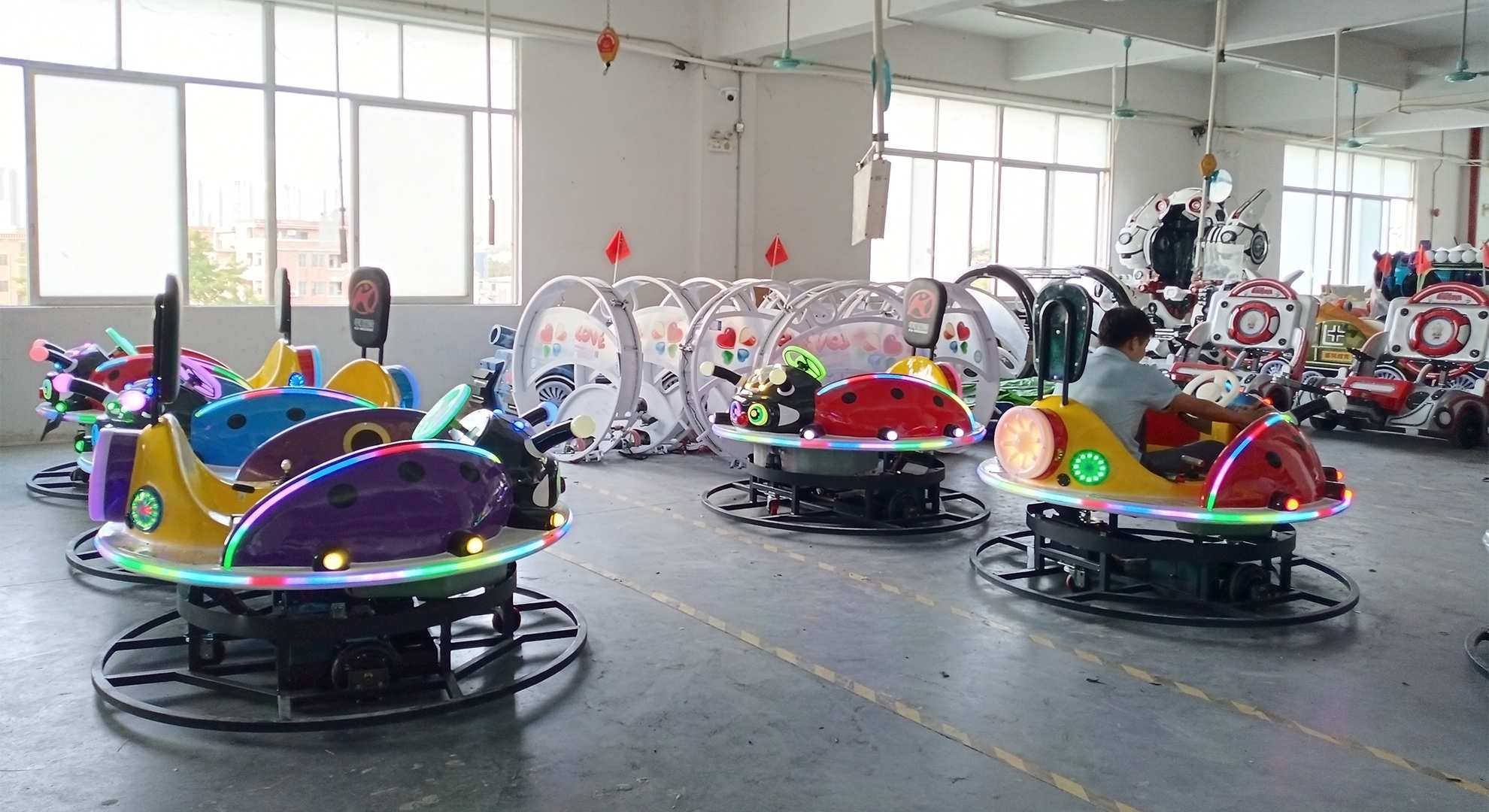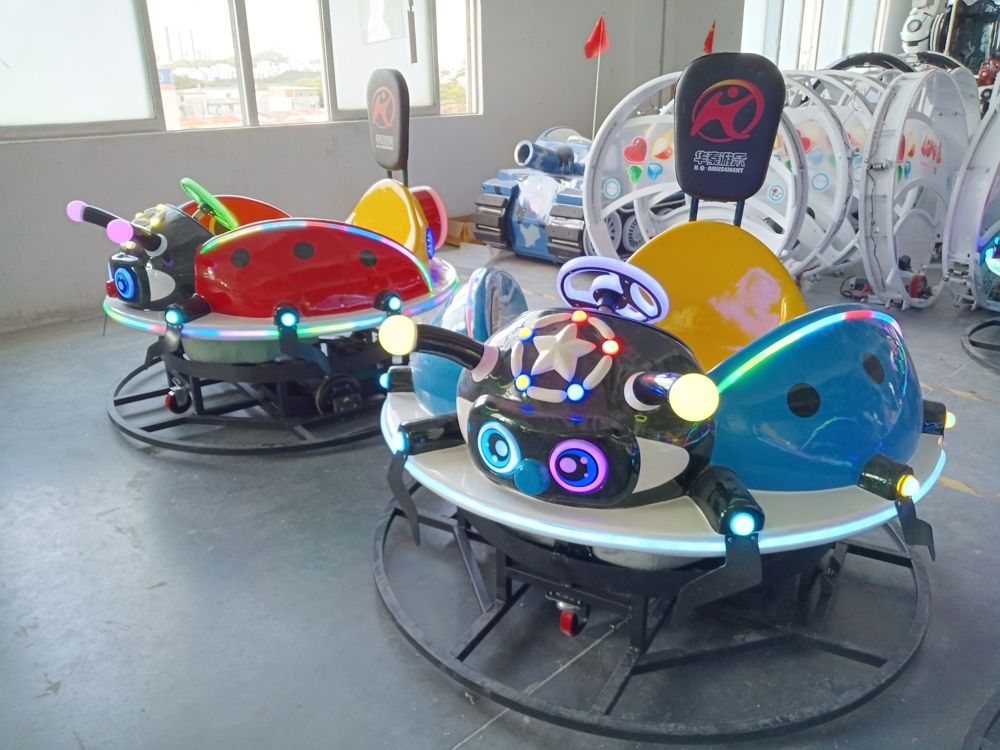Bumper cars have long held a cherished place in the hearts of both children and adults, providing endless joy and unforgettable memories. Yet, how many of us truly understand the intricacies of their structure and the principles that drive their exhilarating movements? In this exploration, HUAQIN Amusement invites you to delve into the inner workings and fundamental operating principles of different types of bumper cars.
Electric Net Bumper Cars
The electric net bumper car relies on the ground floor for its power source. Insulation strips separate the positive and negative poles. Once the power is activated, the three wheels of the ground net bumper car can operate on both poles without encountering width-related issues. This design ensures safety, aesthetics, and convenience, surpassing traditional bumper cars.

Battery-Powered Bumper Cars
In contrast, battery-powered bumper cars draw energy from an onboard battery. This design offers greater venue flexibility as it doesn’t rely on a constant power supply. Each type of bumper car, whether electric or battery-powered, comes with its own advantages and limitations. The choice between them depends on specific operational needs.
The bumper car’s body is a complex assembly, comprising an operating mechanism, transmission mechanism, vehicle body, chassis, rear wheel, buffer tire, seat belt, conductive rod, and electric switch. The Skynet and ground networks create a power supply system. After transforming and rectifying 220V AC power through the control cabinet, positive and negative phases of 90V or 110V DC are added to Skynet and the ground.
The bumper car acquires DC voltage from the Skynet (now predominantly powered by the ground net) through the conductive rod at the tail. This voltage, integrated into the electric circuit of the load motor, rear wheel, and ground net, facilitates the controlled movement of the bumper car. The operating mechanism governs forward and backward motion, turns left and right, and other maneuvers. With a pneumatic damper on the car’s side, collisions become a playful and safe part of the bumper car experience.
In conclusion, understanding the structural nuances and operating principles of bumper cars unveils the engineering brilliance that makes these amusement rides not just a source of entertainment but a fascinating fusion of technology and joy.

